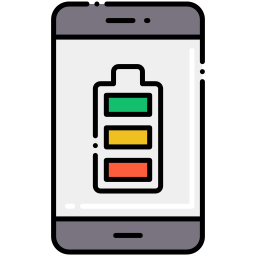
Mobile Phone Hardware Components: Battery
The battery is one of the most essential hardware components in a mobile phone. It is responsible for supplying the power required to operate all other internal components. Without a battery, no mobile phone can function independently, making it a core element of the device’s hardware infrastructure.
Functions and Applications of the Battery in Mobile Phones
Powers the device: The primary purpose of the battery is to provide energy to the mobile phone. It ensures that all the components, including the processor, display, camera, sensors, and wireless modules, receive the required electrical power.
Enables portability: Batteries allow mobile phones to be used without constant connection to a power source. This feature makes mobile phones truly portable, allowing users to carry and use them virtually anywhere.
Supports uninterrupted operation: A reliable battery ensures that the phone runs smoothly during activities such as browsing, gaming, video streaming, and calling. It also supports long standby times when the phone is idle.
Optimizes user experience: Modern smartphone batteries are designed to support fast charging, wireless charging, and long battery life, all of which enhance the overall user experience.
Powers background processes: Many functions in smartphones, such as syncing data, running system updates, and processing push notifications, depend on the battery even when the phone appears inactive.
Supports other hardware components: The battery powers all other internal hardware, including the CPU, GPU, RAM, display panel, speakers, vibration motors, fingerprint scanners, and cameras.
Types of Mobile Phone Batteries
Lithium-ion (Li-ion): These batteries are lightweight, have high energy density, and are commonly used in most modern smartphones. They can be recharged hundreds of times and offer good performance over time.
Lithium Polymer (Li-Po): A more advanced version of lithium-ion batteries, they are lighter and can be molded into various shapes. They are also more resistant to swelling and leakage.
Battery Capacity and Performance
Measured in milliampere-hours (mAh), battery capacity determines how long a device can operate on a single charge. Higher mAh ratings generally indicate longer battery life, although power efficiency also depends on software optimization and hardware usage.
Performance depends not only on capacity but also on charging speed, power management systems, and usage patterns. Some manufacturers include smart battery management software that helps extend battery lifespan.
Availability and Cost
Batteries come pre-installed in all mobile phones and are considered a standard component. In most cases, users do not pay separately for the battery when purchasing a phone.
Replacing a damaged or degraded battery typically involves a cost, especially if the battery is not user-removable. The price depends on the phone model and whether original or third-party components are used.
Some high-end phones feature more advanced battery technologies, such as faster charging, wireless charging, or higher durability, which can indirectly affect the overall device price.
Comparison of Built-in vs. Removable Batteries
Removable batteries: Older mobile phones often featured removable batteries. These allowed users to replace the battery easily if it degraded over time. They also provided flexibility, as users could carry a spare battery for extended use.
Non-removable (built-in) batteries: Most modern smartphones use non-removable batteries. This design supports thinner devices and better protection against water and dust but requires technical skills or professional help for replacement.
Battery Safety and Lifespan
Mobile phone batteries are equipped with safety circuits to prevent overcharging, overheating, and short-circuiting.
Over time, battery performance decreases, typically after 300 to 500 full charge cycles. Users may experience shorter battery life or unexpected shutdowns when the battery health declines.
Proper charging habits, such as avoiding extreme temperatures and not letting the battery drain to zero regularly, can help extend its lifespan.
Conclusion
The battery is a fundamental hardware component in any mobile phone, powering the entire device and enabling mobility, convenience, and functionality. It supports every other hardware component and allows users to stay connected on the go. While most batteries come pre-installed and at no additional cost, replacement or upgrades can involve expenses depending on the device. Over the years, advancements in battery technology have significantly improved charging speed, efficiency, and safety. As smartphones continue to evolve, the role of the battery remains critical to overall performance and user satisfaction.












